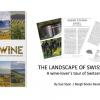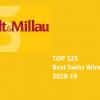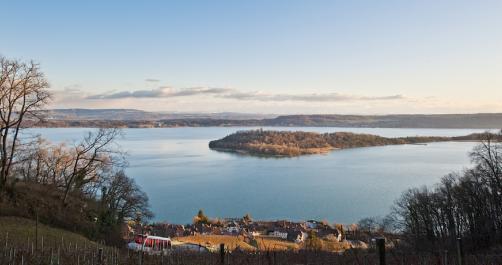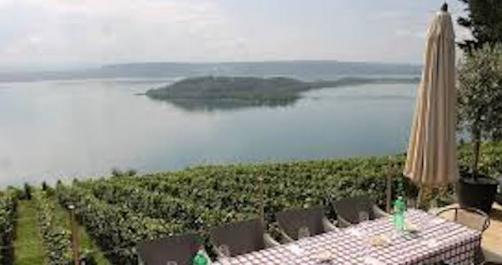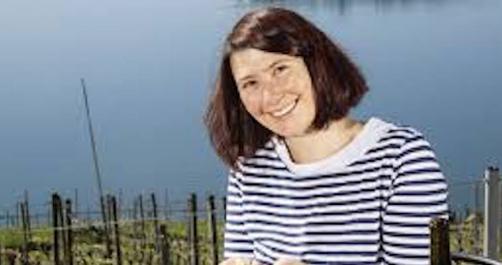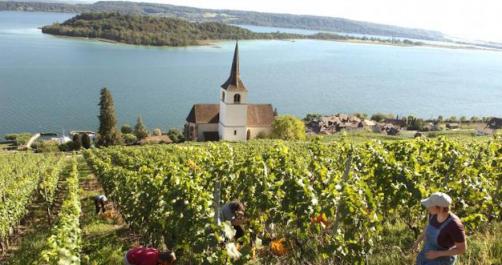The Estate Steiner Schernelz Village between renewal and continuity
Estate Steiner Schernelz Village, Schernelz ob Ligerz, Bielersee, Switzerland
By Laurent Probst | October 27, 2014
After leaving the lake side road leading from La Neuveville to Biel by the town of Ligerz (Gléresses in French), our path lead us up to Schernelz a hundred meters higher. The panorama before us is great. The visitor who visits the Steiner winery by car will immediately realize that being a winemaker here is not an easy task. Others might take advantage of the funicular between Ligerz and Prêles (Festi stop) to reach the winery which is a few hundred meters away.
After a university degree in communication and media in Fribourg, Sabine Steiner left Switzerland to train her winery management skills in Austria. She has recently taken the reins of the family estate created by her father Charles Steiner in 1977.
The cellar is certainly well known. Its pinot gris lead the winery to enter the renowned association of Swiss Wines Memory. For two years in a row now, the winery was listed among the top 100 Swiss wineries by the Gault Millau guide.
As she takes over the family estate, Sabine Steiner, has reached a crossroad. She holds her fate well in her hands and talks about the future of her 15 acres (6 hecateres) estate and of her fiancé, Andreas, also winemaker in the region. A "fusion" or close cooperation between the estates is being considered. On the Schernelz estate, the team is solid and Marco Menke, the oenologist and wine maker will soon be seconded by a new head of culture which will in turn help move from integarted production to a more organic approach. Biodynamic is already being tested on the estate. Speaking of working in the vineyard, Sabine admits that she could not do without it today, although it was hard for her when she was younger. Nevertheless certain works are hard for a woman.
When discussing the wine style of the estate, we realize the young woman knows exactly what she wants: a range of wines tense, carrying a fine acidity. To achieve this, she told us that the vineyards reshuffle which was completed during the last decade was a major step forward. From some fifty different vineyards, the estate is now down to a half a dozen. Cost reductions, increased efficiency, overall a lighter workload. Despite the obvious difficulties of the implementation, she sees only advantages to these changes. In addition, after a wild excitement that saw the region increase the number of varieties (forty for only two hundred and twenty acres of vineyards) this consolidation lead the estate to snatch unattractive vines and reduce the number down to five main varieties.
Among the wines tasted at the winery during our October 2014 visit, we enjoyed the Chasselas "Two Clos" ; an intense and floral nose, a full and balanced sensation with a slightly mineral final. The vintage was born because after the hail episode of June 2013 ; the amount of berries picked on each «clos» did not allow the vinification of two vintages as in previous years. The wines from Sauvignon Blanc and Chardonnay 2013 are both typical, and meet the winemaker’s deired wine style. Sauvignon Blanc grows in three zones and two different heights, they enjoy a balanced body while retaining the essential desired freshness. Chardonnay Reserve 2011 (barrel aging) is a very subtle and delicious wine. The two Pinot Noirs were both fruity and fresh, and the tannins were slightly influenced by their youth, their balance in the mouth is very pleasant.
Located at the heart of a beautiful and lesser known Swiss wine region, we can only invite you to discover and visit this friendly estate.

